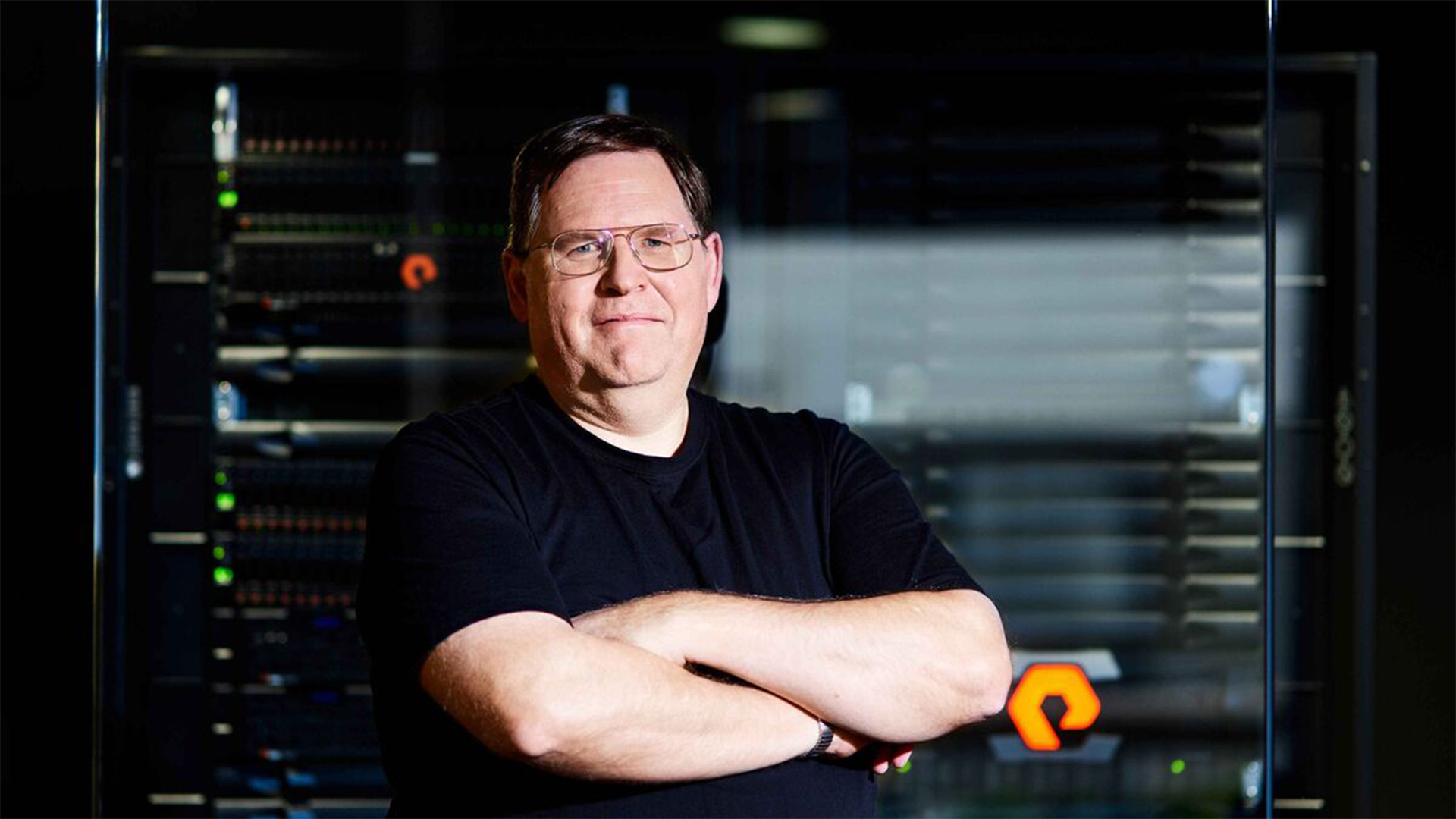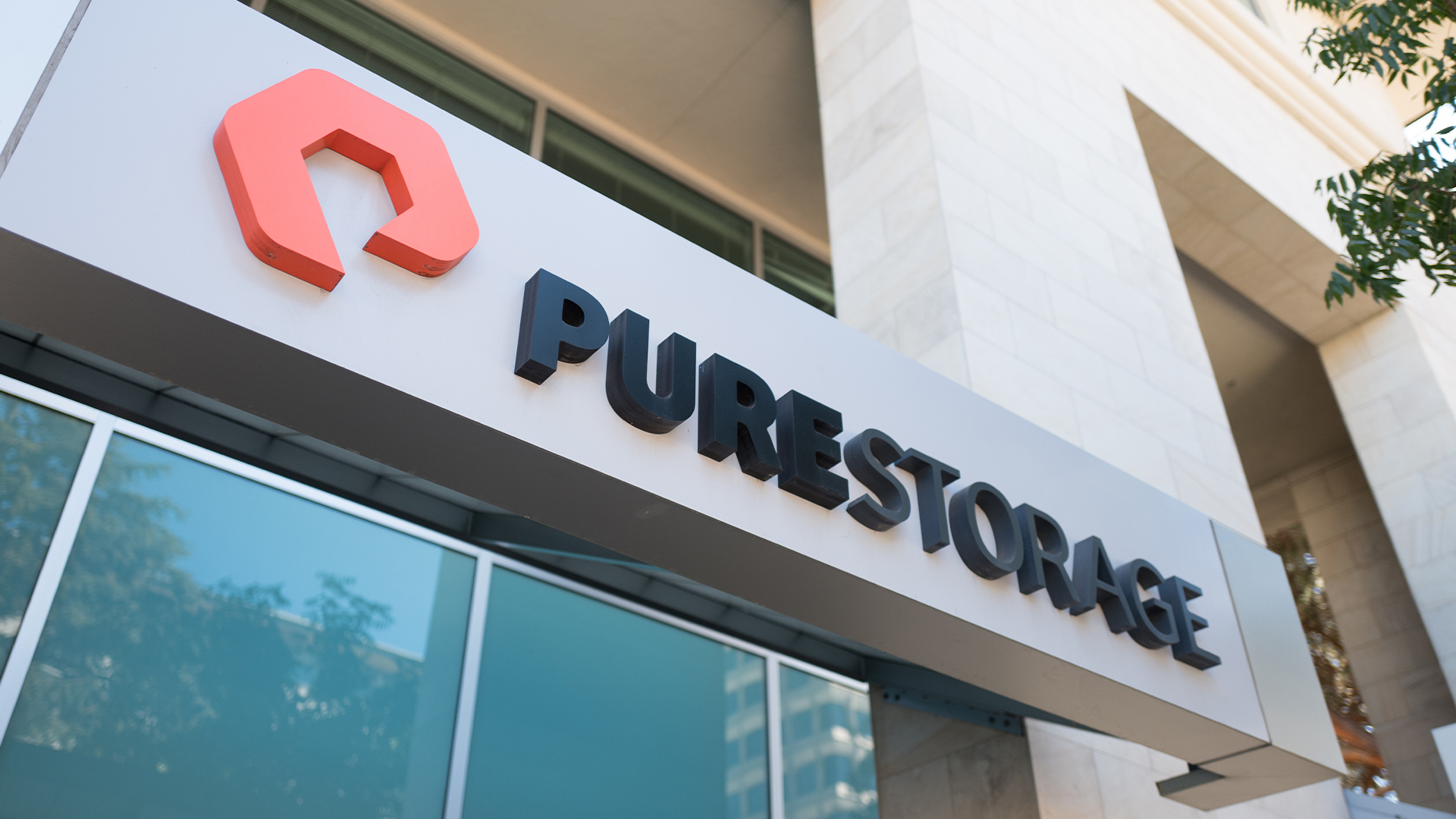‘It’s a hard problem you can never solve unless you know the future’: Pure Storage founder talks all-flash, the death of disks, and the future of data storage
Pure Storage might be moving deeper into the data management sphere, but John Colgrove is still focused on destroying hard disks


Storage is a “hard problem you can never solve unless you know the future,” says John ‘Coz’ Colgrove, but it hasn’t stopped him trying over the last 16 years.
Speaking to ITPro, the Pure Storage founder has been a vocal champion of all-flash storage for nearly two decades now, having become frustrated with the sluggish performance and diminishing returns on traditional disk-based storage.
This inspiration came during his time working at Veritas Software, where he noted there were aspects to the industry that were “silly or annoying”. These included the difficulties experienced by enterprises in migrating from one storage system to another, he says, or how “ridiculously complicated they made it”.
“I had observed hard drives through 25 plus years personally, and seen how much they improved,” he tells ITPro. “But I also saw that they stopped getting faster about the early 2000s, and they then began to slow down.”
This, Colgrove says, showed there was an opportunity to shake up the market, and flash storage would be the mast he would pin his colors to.
“That provided the opening to say ‘okay it's finally time for a new, better storage medium’, and we can use that as a catalyst to fix these other things around how simple and easy it is to use, the pain of upgrading and operating and all that sort of stuff.”
The benefits of flash storage, from performance to energy efficiency and cost, have been key to the company’s value proposition since it was founded in 2009.
Sign up today and you will receive a free copy of our Future Focus 2025 report - the leading guidance on AI, cybersecurity and other IT challenges as per 700+ senior executives
Flash storage has been around for decades, but it wasn’t until the late 1980s and early 1990s that it really began to take off, with a consumer device boom playing a crucial role in driving this growth.
Again, this was something Colgrove noticed at the time and it was clear that the enterprise market had to take a leaf out of the consumer domain’s book.
“In the 70s, all the cool tech was the big enterprise IT systems and things,” he tells ITPro. “Then you start getting the consumer stuff as you went through the late 80s and 90s and, suddenly, consumers had this cool, easy to use tech.”
The enterprise, by contrast, was clunky and not very user friendly, with an attitude of “here’s your system, and here’s a 1,000 page manual you have to study to use it”, he adds.
“It just made no sense. If you rented a car when you came here, you got in it, it’s not the car model you drive, and yet you can drive it and you don’t need to read the 500 page manual that they do for all the nitty gritty controls.”
The core focus here is essentially simplicity, Colgrove says, both on the hardware and software fronts, and when the company launched it had three pillars around which its strategy depended. Naturally, the first of these was leading an industry transition to all-flash storage.
“I believed then that 100% of storage was going to be all-flash and tape,” he says, adding that they’re “not going after tape” and likely never will. “100% of disk should become flash,” Colgrove adds.
Colgrove admits that at the time people “thought I was nuts” for suggesting that a transition of this sort could happen.
“Now they don’t,” he says. “The hard drive guys still think I’m nuts, but they’re just ostriches burying their heads in the sand.”
Dreams of the disk drive’s demise haven’t quite come to fruition yet, but flash has grown in popularity and this is expected to continue in years to come. The all-flash array market was valued at $14.59 billion in 2023 and is expected to reach $74.62 billion by 2032.
Elsewhere, Colgrove says attention also turned to creating products that were simple and easy-to-use. Looking back to the 90s when buying a new phone, he says the process of transferring contacts manually was an indictment of the inherent difficulty that consumers faced.
In the enterprise market, the situation was similarly tedious and offputting - Pure Storage wanted to change that.
“Ease of use is just so important, and then the better customer service/business model,” he says, referring to Evergreen, Pure Storage’s subscription model. It allows the company to continually upgrade customer storage options without the need for disruptive migrations or costly upgrades.
Evergreen sits at the heart of the company’s strategy and, Colgrove says, this has enabled customers to “get rid of the migration problems” faced in years past with disk drives.
Colgrove notes that the company has “stuck to its principles” on these topics over the years, which has proven highly beneficial and enabled it to maintain a clear, long-term roadmap.
Focusing on the data, not the storage
Looking ahead, Colgrove says the company plans to continue its focus on the data management front, which was a key talking point at Pure//Accelerate – the company’s annual conference – particularly with the launch of Enterprise Data Cloud (EDC).
“Don’t manage the storage, manage the data” has been the warcry in Las Vegas,
“I think [trends are] continuing to shift to getting more intelligence about the data,” Colgrove says.
He notes there’s a sense that dealing with data storage is almost like dealing with a “black box” and a major hurdle to adoption of EDC is educating customers that there’s value in it.
“I think we’re going to see a thrust from us in that direction around opening up the black box,” he says. “That’s a bit of a delicate balancing act at times because there are some customers who [feel that] from the array you shouldn’t be able to see data at all.”
“There’s a balancing act there that we have to crack open, that black box is the next level.”
Ultimately, Colgrove believes that the launch of the EDC will prove to customers that there are benefits to be unlocked with regard to automation, visibility, and optimization.
“I am really excited about the Enterprise Data Cloud,” he says. “And I’m really excited about the roadmap and what we’re doing with hyperscalers to wipe out disks. It’s like I said, what we started out to do. Over the next few years, we’re going to make gigantic strides in both those areas.”

Ross Kelly is ITPro's News & Analysis Editor, responsible for leading the brand's news output and in-depth reporting on the latest stories from across the business technology landscape. Ross was previously a Staff Writer, during which time he developed a keen interest in cyber security, business leadership, and emerging technologies.
He graduated from Edinburgh Napier University in 2016 with a BA (Hons) in Journalism, and joined ITPro in 2022 after four years working in technology conference research.
For news pitches, you can contact Ross at ross.kelly@futurenet.com, or on Twitter and LinkedIn.
-
 Google is scrapping its dark web report feature
Google is scrapping its dark web report featureNews Google said while the dark web report feature offered “general information”, the tool didn’t provide “helpful next steps” for users potentially impacted by a breach.
-
 AI means you're probably going to need bigger developer teams
AI means you're probably going to need bigger developer teamsAnalysis Software developers may be forgiven for worrying about their jobs in 2025, but the end result of AI adoption will probably be larger teams, not an onslaught of job cuts.
-
 Pure Storage beefs up FlashBlade, FlashArray offerings in platform performance focus
Pure Storage beefs up FlashBlade, FlashArray offerings in platform performance focusNews The updates to the FlashBlade and FlashArray lines look to meet growing workload demands
-
 Pure Storage founder: Flash drive efficiency will “flatten out” but still has a clear role for AI
Pure Storage founder: Flash drive efficiency will “flatten out” but still has a clear role for AIInterview John Colgrove knows flash’s moment in the sun won't last forever – but doesn’t expect a competitive technology to arrive this decade
-
 Everything you need to know about Pure Storage
Everything you need to know about Pure StorageIn-depth A brief guide to Pure Storage, the data storage specialist known for its all-flash approach
-
 Pure Storage’s FlashArray//E launch offers “multi-year advantage” with performance and energy efficiency boosts
Pure Storage’s FlashArray//E launch offers “multi-year advantage” with performance and energy efficiency boostsNews The FlashArray lead at Pure Storage, said the launch will act as a “key differentiator” for the company in the storage space
-
 Storage, sustainability, and AI in the spotlight at Pure Storage Accelerate 2023
Storage, sustainability, and AI in the spotlight at Pure Storage Accelerate 2023Analysis More than 1,000 attendees will flock to Resorts World Las Vegas for Pure Storage's annual conference next week